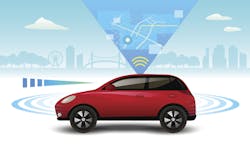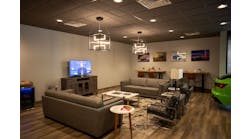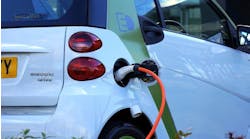In 1921 Amelia Earhart had just bought her first plane, lifesaving insulin was discovered, and in Hamburg, Germany, the first Bosch repair shop opened its doors.
Today the network spans more than 15,000 repair shops in 150 countries, and as the team celebrates its 100th anniversary it's also looking ahead to prepare its network of independently-owned repair shops for the technology that’s sure to shape the next 100 years.
From ADAS to EV market positioning, Ratchet+Wrench spoke with Mark Polke, director of Bosch Workshop Concepts, North America, to learn how his team plans to prepare the Bosch Car Service network for the future of auto repair.
What will be the biggest shift repair shops will need to prepare for as they plan for the industry’s future?
ADAS. There’s no question. It’s funny because this is something we predicted years back and is something we’re seeing true follow through on from an investment point of view.
When you think of ADAS, right now so many are still thinking about it in terms of body and collision work because so much of it is external to the car. But today we’re seeing that shops are ready and willing and actively investing in very expensive equipment to be able to perform that kind of service. They’re seeing electrification coming on quickly and they’re eager for guidance and looking to us to say what’s coming next and how to best prepare.
This isn’t something you’re going to push off to collision centers and it’s not something that’s going to stay segmented in the ways we’ve seen in the past. It’s a big part of the future of auto repair.
When should repair shops begin preparing for that shift?
The reality is that it’s here now, and it’s already happening in shops across the country that are starting to spend big on the training and the tech to get the job done.
Before COVID hit, I spent probably 75 percent of my time on the road inside shops talking to shop owners and only a small number had already invested in ADAS-specific equipment. Now the calls are coming in every day as shops are trying to price the equipment and figure out how will be best to invest.
It’s not something they’re taking lightly, but they’ve already decided to take the plunge and are starting to plan ahead by getting innovative in the partnerships they’re building with local repair and body shops who can’t take on the work themselves.
How else is Bosch advising it’s network to plan ahead?
We’re ramping up our hybrid and electric vehicle training. We’ve got six EV courses in the works that are nearly ready to launch. We’re working feverishly to bring this type of training out because it may be introductory, but shops need those basics to move forward.
Shops are also beginning to invest and position themselves in their markets with EV chargers. Some are already using EVs as loaner vehicles but it’s bound to become a more standard customer convenience and a great way to stand out. It’s a sign that says “Come here. We’re looking toward the future, ahead of the curve, and anticipating your needs.”
EVs are now fully capable of driving across the country and OEs are going to be helping their customers find places to charge up, which will also help put some service centers on the map and direct business their way.
EVs are gaining major buzz, but what else shop owners should have on their radar?
Autonomous driving. That technology relies on a lot of sensors, calibrations, etc. Similar to ADAS, I expect this will be something shops need to stay on top of and just like EVs, the shift to more diagnostic work, as opposed to repairs under the hood is only on the rise and will be an everyday reality, as opposed to a far off future concern. In general the driving public is still warming up to autonomous vehicles and building confidence in them but as they pick up in different areas across the country, especially the West Coast, it’s just years away.




